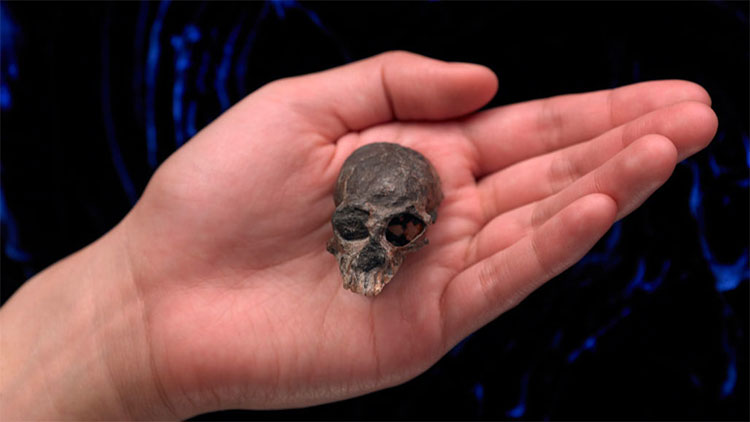Monkey skull fossils 20 million years ago have the potential to reveal the evolution of the human brain
The skull fossil of a prehistoric primates living in the Andes Mountains 20 million years ago helps scientists uncover the mystery of the evolution of the human brain.
This is a study published August 21 in Science Advances magazine.
Scientists from the American Museum of Natural History and the Chinese Academy of Sciences used computerized tomography (CT) and X-rays to scan the inner part of the skull fossil of the extinct Chilebus to determine structure inside the skull. Chilecebus is a monkey family of New World living by eating leaves and fruits throughout the ancient mountain areas. Primate animals are often divided into two groups, including the New World monkey family living in the Americas and Oceania and the Old Monkey family close to people and relatives with the New World monkey.

The skull fossil of a prehistoric primates 20 million years ago has a compact size in the palm.(Photo: sciencenews.org).
For a long time, scientists believe that the brain size of primates increases over time. However, the new study provides an important finding, showing that primates' brain sizes increase in a repetitive and independent way during evolution. Research group co-author John Flynn of the American Museum of Natural History said the team of scientists discovered each species' brains in primate groups to increase in size, while the brain size of certain groups was reduction.
In addition, the study also found that although Chilecebus was close to the small Saguinus monkeys in South America or the squirrel-tailed macaque today, in contrast to these species, Chilecebus' brains have a number of grooves known as sticky folding shows more complex awareness.
In modern primates, the size of the brain's visual and olfactory centers is inversely proportional to each other. This means that those species that develop stronger vision often have worse sense of smell and vice versa. However, scientists in the study found that a small olfactory region in the ancient Chilecebus brain did not go along with better visual ability. This proves that in the evolution of primates, the visual and olfactory system is not as closely related as previous theories.
Research co-author John Flynn said that thanks to the ancient fossils well preserved at 10,000 feet (3,000 meters) in the Andes Mountains, researchers can test previous theories, better understand Brain development in primates, as well as a deeper understanding of evolution in human history.
- Monkey skull fossil 6 million years old in China
- Monkey skull fossil 6 million years old in China
- The strange skull of ancient apes reveals the secret of how the primates' brains grow
- Discovered mysterious skull bones 400,000 years old in Portugal
- Determining the evolution of human apes
- Human brain lesions 8,000 years ago
- Secret of taking advantage of the 'brain power' of 20 years old
- Footprints of 5.7 million years in Greece challenge evolution theory
- Human ancestors are not smart
- Human evolutionary history can be rewritten
- The discovery of monkey fossils in North America 21 million years ago
- Detecting common ancestor fossils of humans and modern primates
- Promoting human potential to reveal many mysteries
 Discovered an ancient centipede fossil 99 million years old
Discovered an ancient centipede fossil 99 million years old Discovered bat-like dinosaurs in China
Discovered bat-like dinosaurs in China Discovered a 200-year-old bronze cannon of the coast
Discovered a 200-year-old bronze cannon of the coast Discover 305 million-year-old spider fossils
Discover 305 million-year-old spider fossils Does exercising our minds a lot help us burn excess calories?
Does exercising our minds a lot help us burn excess calories?  How did Egyptian mummies remove the brain from the body?
How did Egyptian mummies remove the brain from the body?  Shocking evidence that near-death experiences are real in people who have had cardiac arrest
Shocking evidence that near-death experiences are real in people who have had cardiac arrest  AI has been able to accurately reproduce more than 80% of images in the human brain.
AI has been able to accurately reproduce more than 80% of images in the human brain.  Neuralink tests controlling a robotic arm with thoughts
Neuralink tests controlling a robotic arm with thoughts  Elon Musk's ambition to merge humans with AI
Elon Musk's ambition to merge humans with AI 